The allure of a fresh new notebook: creamy paper, a rigid spine, and that incredible new book smell that no candle can capture, try as they might.
But along with the smell of crisp new pages comes the unavoidable anxiety. What if I waste it? What if I write the wrong thing? If you're anything like me, this anxiety is the reason you have stacks of unused notebooks lying around your house. One day, I promise myself, I'll have something worth writing down.
In reality, you probably have plenty of worthwhile things to write down already—you just need to organize them. That's where bullet journaling comes in.
What is a bullet journal?
A bullet journal (or bujo) is a method for organizing your personal productivity. Initially developed by digital product designer Ryder Carroll, it's now one of the most popular ways to stay organized.
To create a bullet journal, you start with a blank notebook, preferably one that uses a grid rather than the more traditional lines. You're free to add any sections you want—from to-do lists to brainstorm pages—but all bullet journals have the same fundamental components:
An index. The index is basically the map to your bullet journal; it lets you know where different sections are located in your notebook.
A key. This is a list of symbols you use to track a task's status.
Logs. Logs are what you think of when you think of traditional planner pages: they're lists of things to do. Bullet journals can have future logs (an overview of the coming months), monthly logs, weekly logs, and even daily logs.
Collections. Collections are just content grouped together—for example, you might have a collection of all your weekly logs for the year or a collection of recipe idea lists.
Migration. Migration is just a fancy word for periodically reviewing your bullet journal and shifting items from one log or list to another. For example, if I put "paint the living room" on my monthly log for February but don't get around to it, I might migrate it to my March log.
Aside from these fundamentals, you have tremendous freedom with a bullet journal—and that can be its own kind of overwhelming. Here are a few tricks worth trying.
Turn a regular planner into a bullet journal
If you poll a group of bullet journal pros about why they love their bujos so much, most of them would say it all comes down to the method's flexibility.
But if you're new to bullet journaling (or simply low on time), creating a hybrid planner can give you the best of both worlds. In other words—to quote my Hamptons bestie Ina Garten—if you don't have homemade, store-bought is fine.
A great way to start is by using bullet journal status notation in your regular planner. You can easily go beyond a simple "done" checkmark by introducing symbols for delegated, deferred (aka postponed), and waiting. By using specific symbols for the status of a task or project, you can be much more specific about how much you've really accomplished.
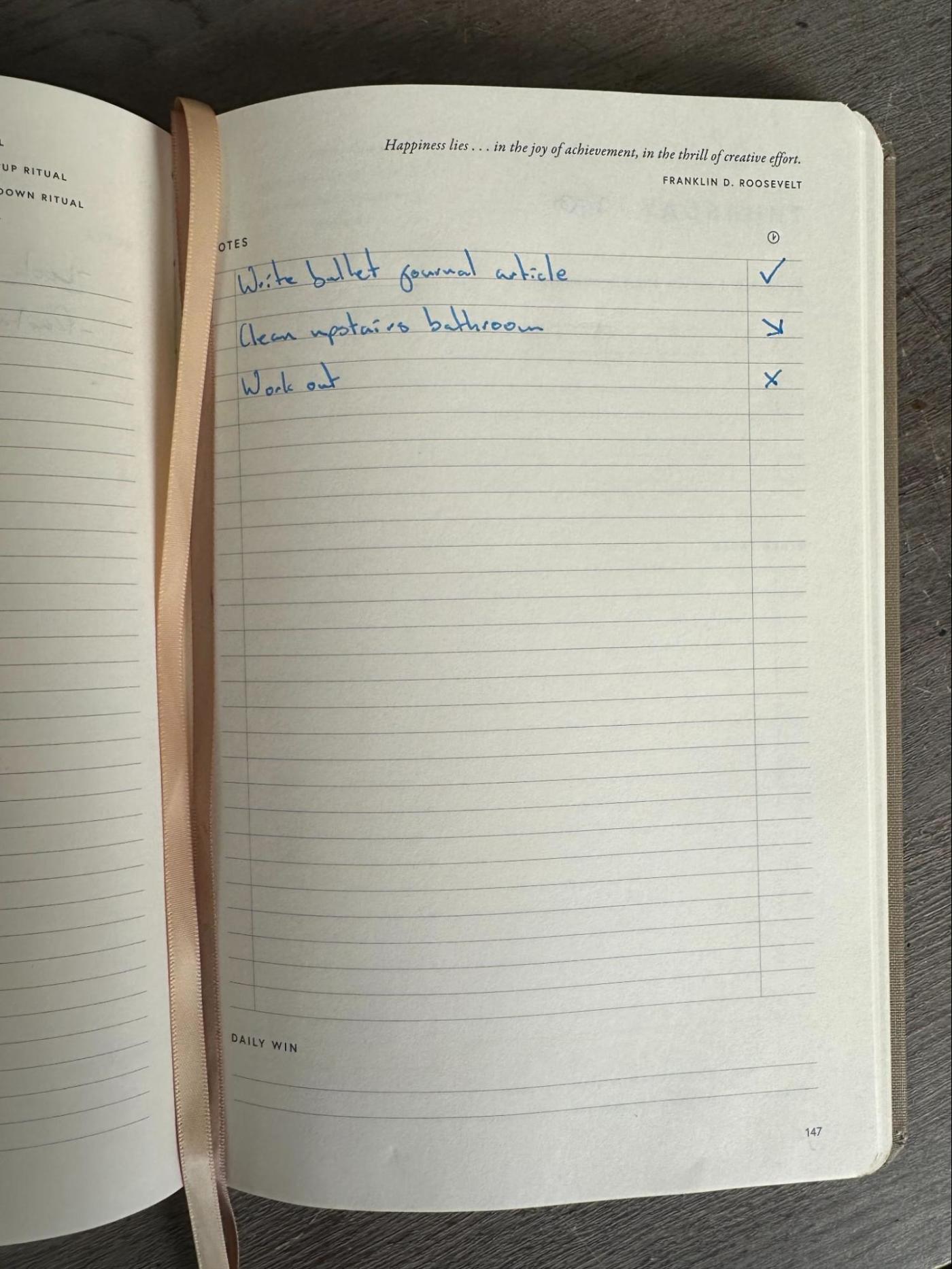
Whether you stick to just symbols or also incorporate other bujo approaches like creating collections, this hybrid approach can give you all the structure of a typical planner—plus the freedom and creativity of a bullet journal.
Track your habits—for real this time
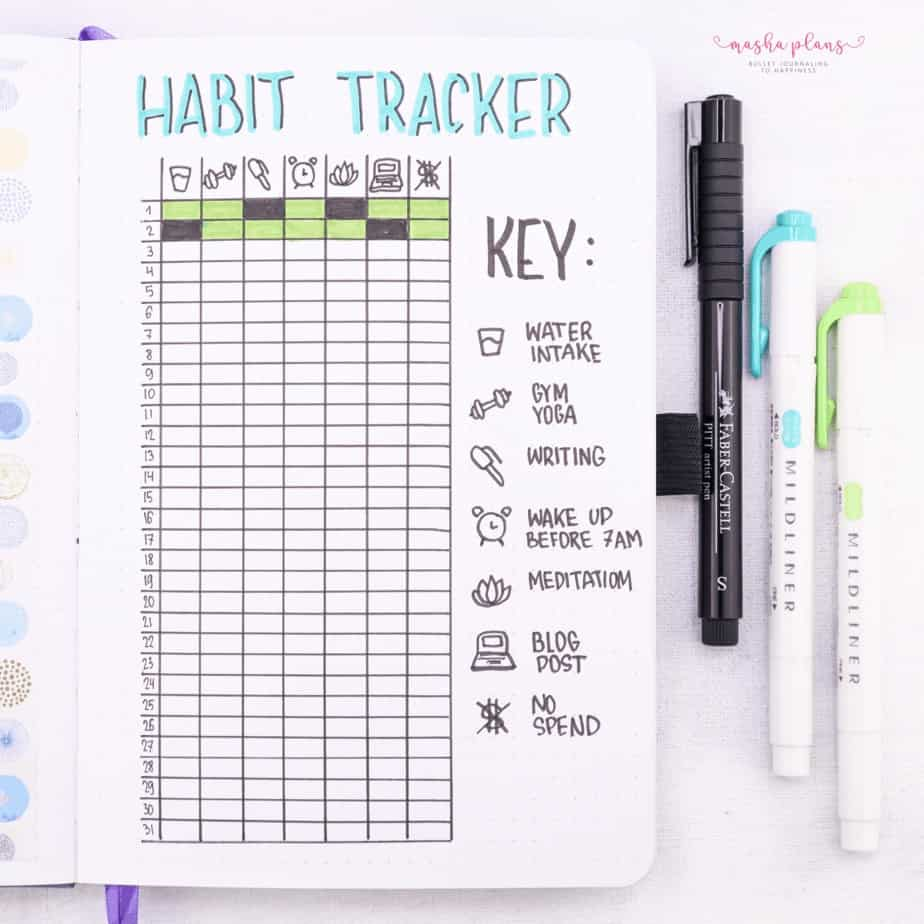
If you're really into planners and journals, chances are you love them for the same reason I do: something about writing information down makes it more real. That's why I absolutely love using my bullet journal to track my habits.
Habits are notoriously tricky to establish. Writing them down—and gamifying your habit tracking—can make it a little less intimidating.
Personally, I like to have separate pages for different groups of habits. For example, for a long time, I created a dedicated self-care habit tracker with items like working out, taking my vitamins, and flossing. But you can be more granular or more high-level, by either creating tracker pages for every single habit or rolling your habits into one overarching tracker.
You can also build in periodic habit reviews and rewards. I personally like to step back every week and look at how diligent I've been with the habits I'm trying to build—but you can review your progress at whatever cadence works for you.
Get more done with a 15-minute task list
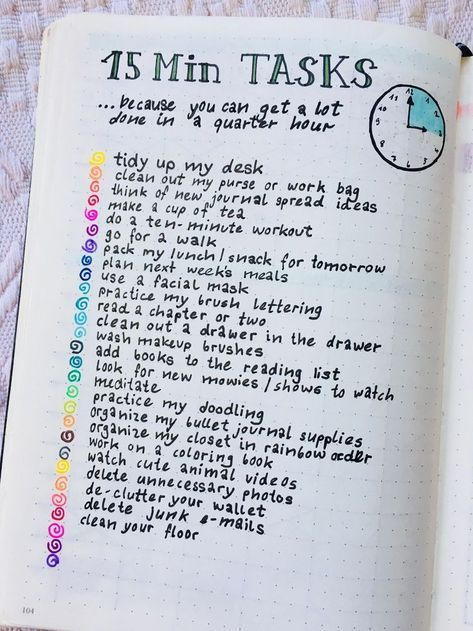
One of the trickiest productivity skills to master is making the most of your time. When you have a chunk of free time between meetings or need to take a break between tasks, it's easy to spiral into truly lounging around—and then the next thing you know, it's 5 p.m. and your day feels like a waste.
It's also common to feel overwhelmed by routine tasks, such as cleaning out your fridge, or feel like you never have enough time for them.
That's where the 15-minute task list comes in. In short, it's a page in your bullet journal dedicated to quick, routine tasks that don't require any planning to do—think vacuuming your mudroom or writing out your grocery list. Then, when you have a spare 15 minutes throughout your day, choose a task from the menu of options to do.
I should add that generally, I'm a big proponent of down time; sometimes, you just need a break. But I've also learned that a good break doesn't just mean lying around doing nothing—it often involves doing something different or unrelated to whatever you were focused on for the previous chunk of time. That's why I love the 15-minute task list so much: it gives me the chance to refresh my brain by doing something unrelated to work, while still getting stuff done.
Use pixel tracking to chart your mental health
I admit it: I'm a sucker for cool data visualization, like this knit blanket that tracks daily temperature. (I can see the look on your face, and I'm ok with it.)
One downside of all planners is that they're really good at tracking specific outcomes (like how many times you worked out this month) and less good at tracking ephemeral things like your mood.
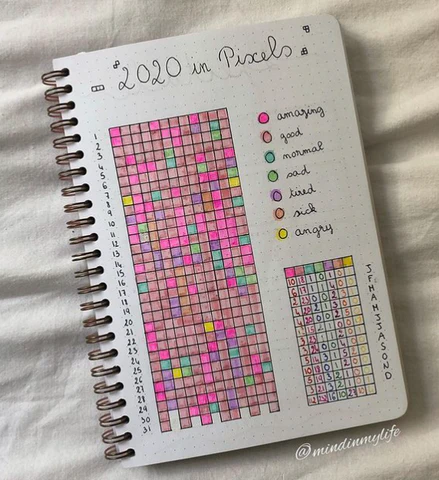
Enter pixel tracking. By using color to track fluctuations in your mood, you can develop a deeper understanding of how your mental health fares over time. For example, I use green to track really good days—and red to track days where my mental health is on the struggle bus. I love this method because it helps me correlate my mental health to different seasons of my life (or different seasons, period—thanks, seasonal affective disorder!).
And you don't have to use pixel tracking to track just your mood, either. You can track anything that fluctuates: the weather, your appetite—even your creativity.
Create a weekly review page
A key part of bullet journaling is migration: reviewing your lists periodically and shifting unfinished items to new lists. Most avid bullet journalers practice a few different kinds of migration. For example, you might review and move tasks from today's daily log to tomorrow's every evening, while reviewing your monthly log at the end of the month.
One of the most underrated bullet journal practices, though, is the weekly review and migration. In my experience, it's so helpful to understand what I accomplished (and what I didn't) week over week. For one thing, it gives me insight into which routines are working for me—and which aren't. It also helps me set more realistic goals: if I'm dropping a lot of tasks week to week, maybe I'm biting off more than I can chew.
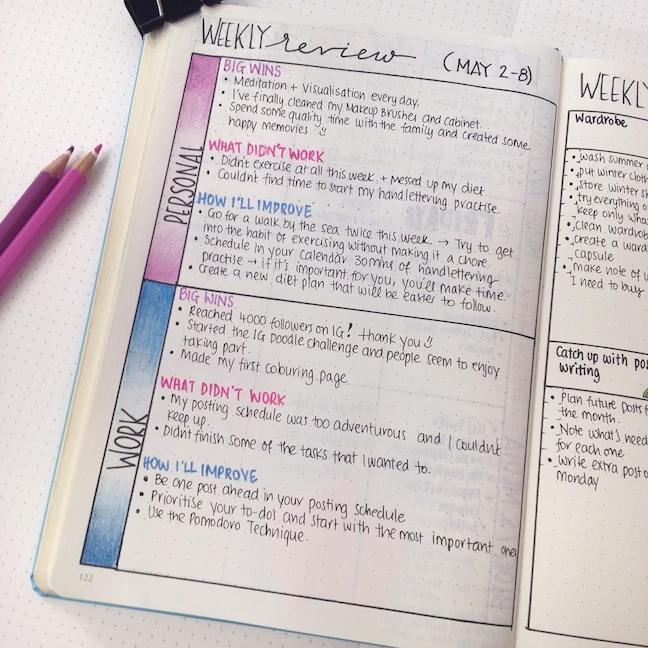
To make these reviews easier and more actionable, you can create dedicated weekly review pages in your bullet journal. These pages can include sections like "How much progress did I make on my three most important tasks last week?" and "What worked last week? What didn't?" That way, you can move beyond simple task tracking into self-reflection—which is the key to long-term productivity improvements.
Save space for doodles
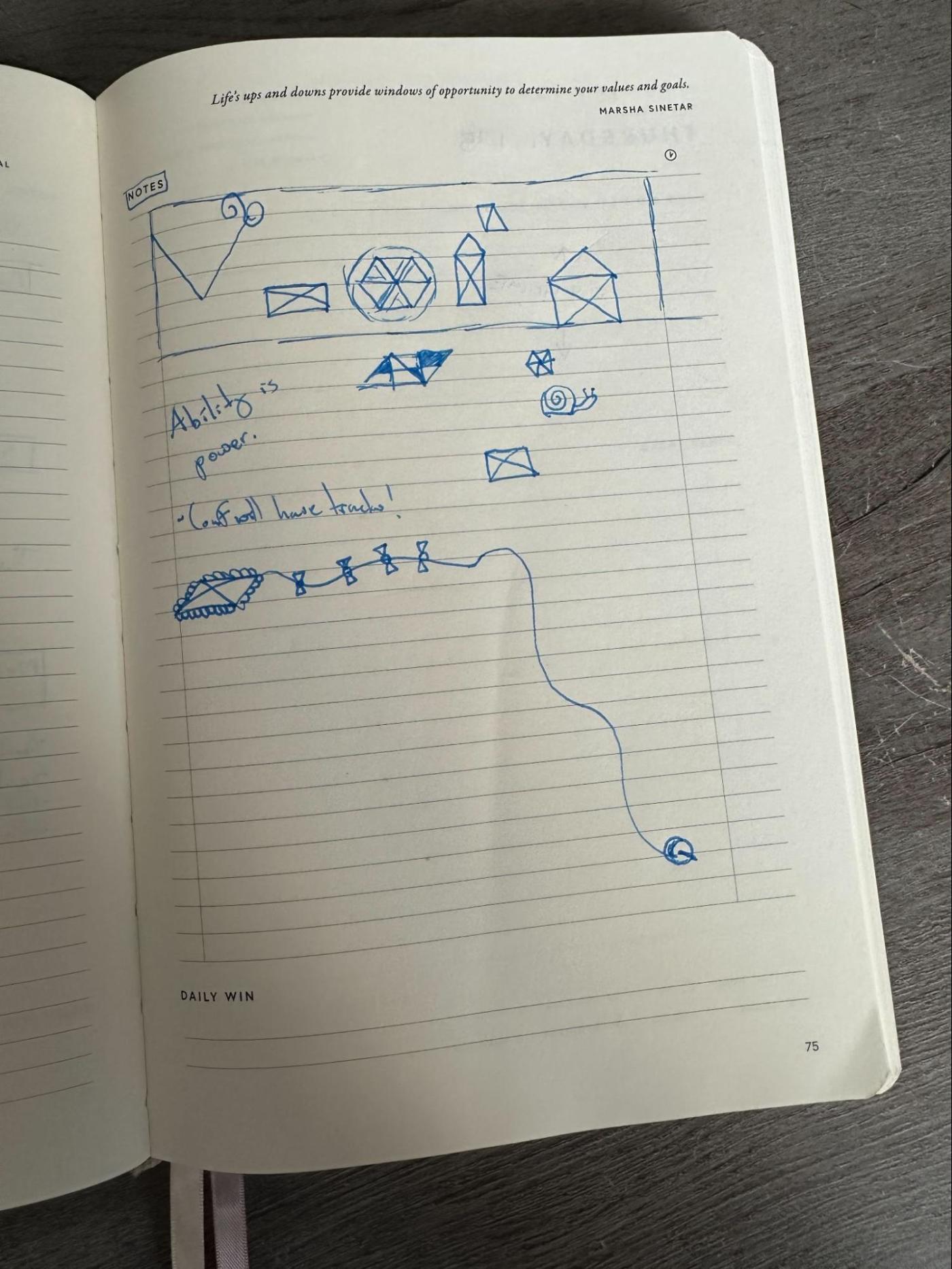
Bullet journaling is one of the loosest, most self-directed ways to plan and organize your life. But too often, we get caught up in everything we need to do—and we forget to have a little fun.
That's why I love to leave space in my bullet journal for doodling. Even if you're not the most creative person (I'm not!), doodling can have real benefits for your thinking and concentration. Your doodles might not be the most elaborate or best-looking (me again), but they can help you focus better—especially if you doodle during meetings.
Experiment to find what works for you
After years of struggling with consistency, I'm convinced that the key to keeping an effective planner or journal is ultimately enjoyment: you have to like it enough to keep making time for it. That's why bullet journaling is such an appealing approach—aside from a few fundamentals, you get to chart your own course. So keep experimenting; eventually, you'll discover the methods you love.
Related reading:





